Reports
Further Activity at Suspected Parchin Explosive Testing Complex: Two Small Buildings Razed
by David Albright and Robert Avagyan
May 30, 2012
Satellite imagery obtained by ISIS shows what appears to be further sanitization activity at the site in the Parchin military complex where Iran is suspected to have conducted high explosive tests pertinent to the development of nuclear weapons.
DigitalGlobe satellite imagery from May 25, 2012 shows that two small buildings at the same site as the suspected testing chamber have been razed (figure 1). There are visible tracks made by heavy machinery used in the demolition process. Heavy machinery tracks and extensive evidence of earth displacement are also visible throughout the interior as well as the exterior of the site’s perimeter (figures 2 and 5).
This new round of activity has followed suspected cleanup activities in the explosives testing chamber building, which are visible in an April 9, 2012 satellite image published in an earlier ISIS report (figure 4). In the April 9, 2012 image, the two support buildings are intact (figure 3).
These activities raise further concerns of Iranian efforts to destroy evidence of alleged past nuclear weaponization activities. The IAEA has asked repeatedly to visit this site, but so far Iran has refused. In the May 25, 2012 IAEA safeguards report on Iran, the IAEA stated that “based on satellite imagery, at this location, where virtually no activity had been observed for a number of years, the buildings of interest to the Agency are now subject to extensive activities that could hamper the Agency’s ability to undertake effective verification.”
The newest image raises concerns that Iran is attempting to raze the site prior to allowing an IAEA visit. The razing of the two buildings may also indicate that Iran has no intention to allow inspectors access soon. In 2004, Iran razed the Lavisan-Shian site, which held the Physics Research Center (PHRC), interfering with the ability of the IAEA to investigate allegations that the PHRC was involved in military nuclear activities.
Iran should immediately allow the IAEA access to Parchin and explain the significance of these apparent cleanup activities.
Figure 1. Imagery from May 25, 2012 showing the razing of two small support buildings. It also shows heavy machinery tracks near the site
Figure 2. Wide view image of the suspected high explosive testing site showing extensive evidence of earth displacment activity.
Figure 3. Imagery from April 9, 2012 showing the two small buildings intact near what is suspected to be the high explosives testing building.
Figure 4. Imagery from April 9, 2012 showing suspected cleanup activities at the building alleged to contain the high explosive chamber used for nuclear weapon related tests.
Figure 5. Evidence of extensive earth dumping in the pond to the north of the Parchin high explosive test site. Signs of fresh traffic on road leading to pond.

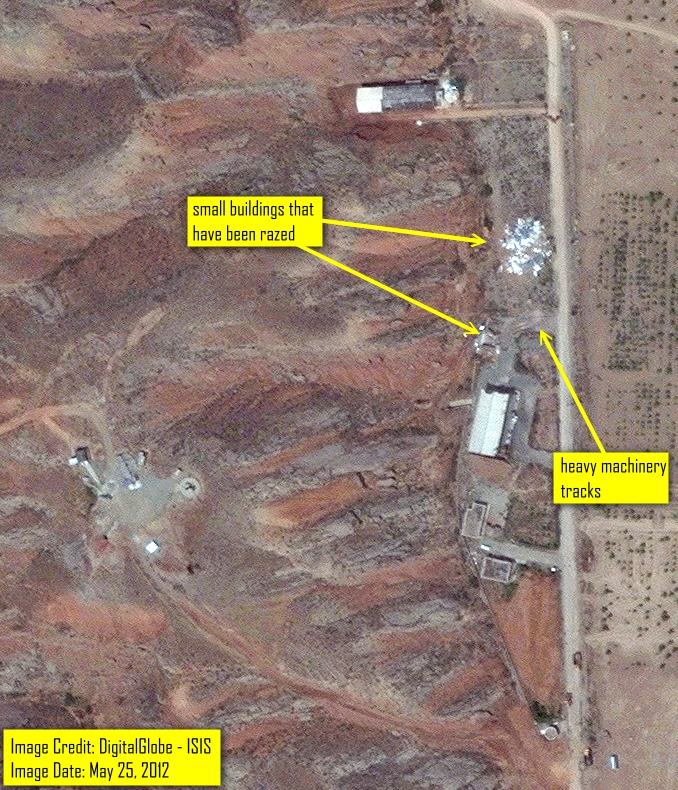
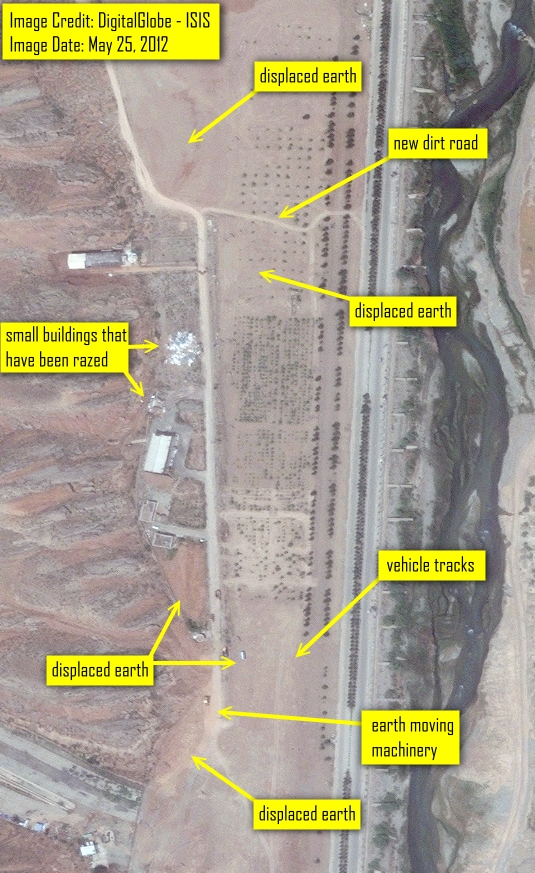
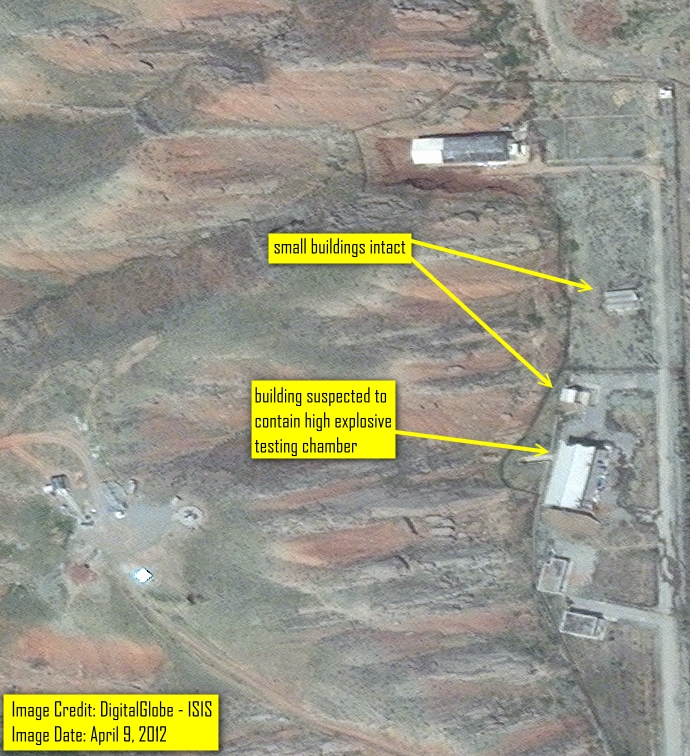
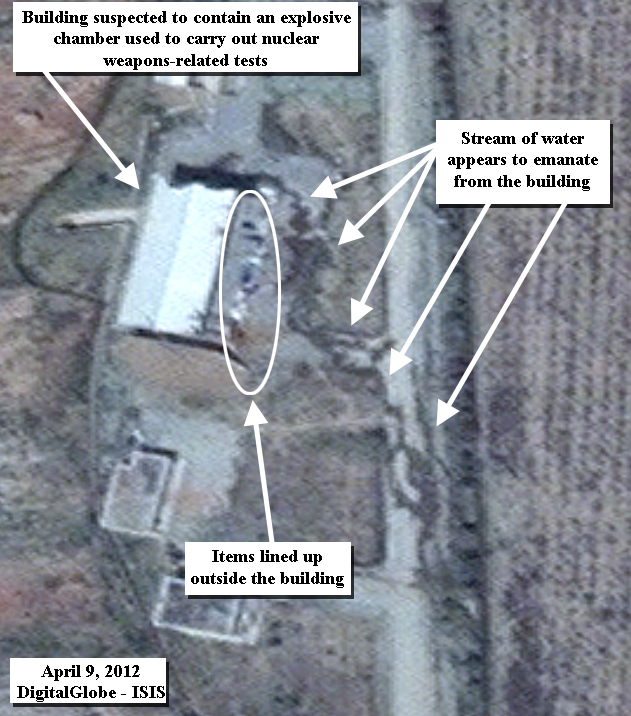
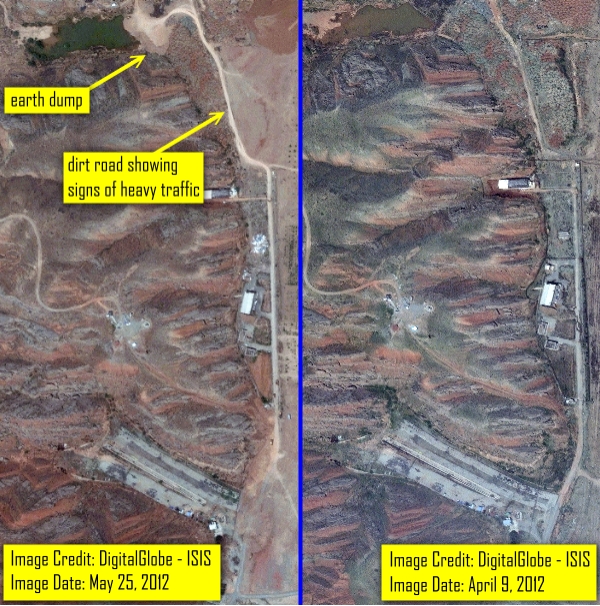
 twitter
twitter